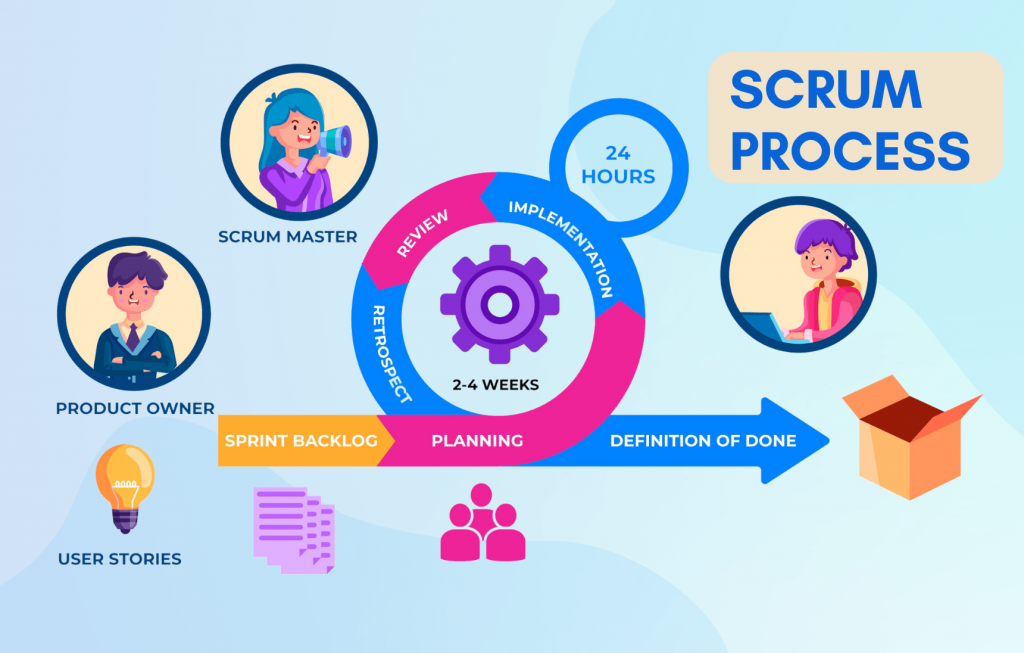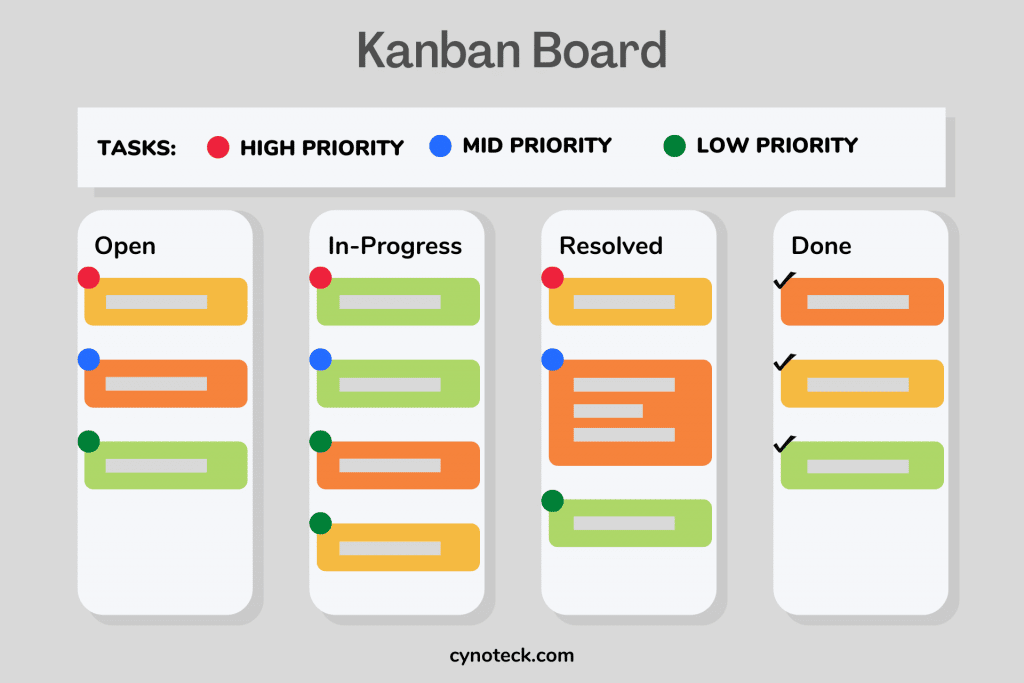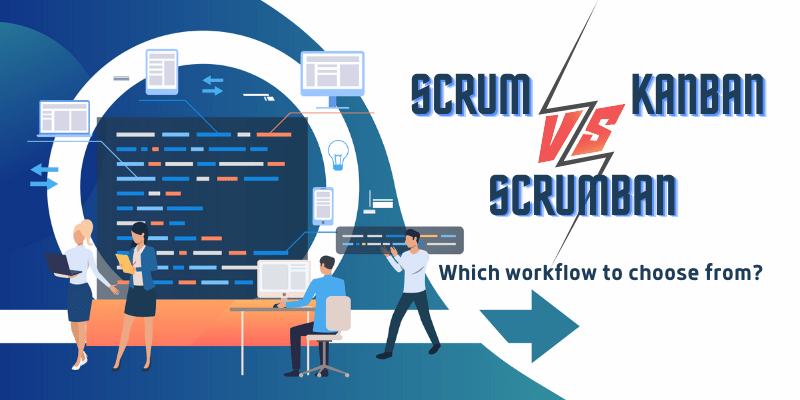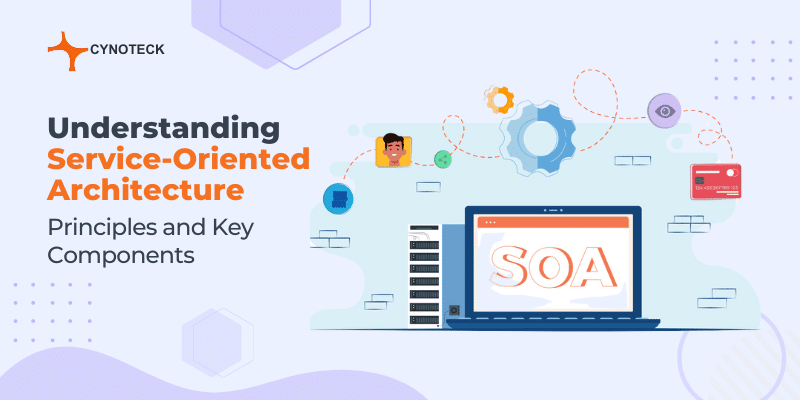This Blog elucidates the workflows that can be adopted by an organization. Workflow is the sequence of industrial, administrative, or other processes through which a piece of work passes from initiation to completion.
A workflow constitutes a sequence of outlined steps involved from the start through to the end of a working process to accomplish a task. Thus, a workflow can be divided into predefined stages in which a task can be at a particular instant of time. It starts with To Be Done and ends with Done.
In Agile Project management the most popular workflows are:
- Scrum
- Kanban
- Scrumban
Scrum Vs Kanban Vs Scrumban
The choice of workflow that the organization chooses to implement depends on the kind of work the teams do and whether the teams are interrupted during the work they do. Also, an organization can have few teams working with Scrum and few teams working with Kanban or both. It is not necessary that the entire organization adopts a single workflow.
A few things should be kept in mind when deciding the workflow.
- Predictable delivery schedule
- Extent of Planning
- Unplanned Urgent tasks interrupting the workflow
Scrum:

In the case where the teams must work on products that have a predictable delivery schedule and the team will not undertake any other additional work which is not decided earlier in the Sprint Planning should opt for Scrum.
So, if a new requirement comes from the stakeholder in the middle of a sprint, then such requirements need to wait until the current sprint ends. The request is added to the product backlog. It is only after the completion of the current sprint; that the developers can pick up the new request (depending on the priority assigned by the product owner) for development.
Additionally, when there is a sufficient extent of planning of tasks in the product backlog and the priorities do not change often, the teams should choose scrum. The scrum framework is team-based and focuses on the team delivering on their sprint commitments. Interruptions mid-sprint are discouraged.
Also, read: Top 9 Software Development Models to Choose From: Phases and Applications
Kanban:

In scenarios where there is a lot of change in priorities and the team members can take up the new tasks as soon as their previous task is done, even in the middle of the sprint should implement Kanban.
Kanban gives the flexibility to pick up new requirements that are urgent and have high priority.
Additionally, when adequate planning cannot be done in advance for a duration of a sprint and the priorities keep altering, Kanban is the go-to choice.
Other factors such as the scope of work changing quickly, that is if a quarter of the team’s work changes mid-sprint, then also Kanban should be implemented. Because of all these factors, the delivery schedule of such products is not predictable; there is no such requirement of a feature to be delivered after every sprint.
The idea behind Kanban is that whenever someone needs something done, they just need to post it at the top of the priority list and then wait for those who can work on it to take care of it.
Also, read: Agile project management for Agile Delivery
Scrumban:
This is a hybrid workflow mostly adopted by teams that like a structured workflow like scrum as it allows regular delivery and accommodates a small amount of deviation due to urgent work items, they use the features of Kanban.
Scrumban gets its structure from Scrum and flexibility from Kanban. One can reap the benefits of both Scrum and Kanban by implementing a hybrid approach that capitalizes on the best parts of both.
Unlike other approaches, Scrumban is more prescriptive in nature by providing you with a process map, but also allows the team to assign tasks in customizable lanes to improve how they get things done.
Also, read: Agile ERP Implementation – Advantages and Things to Consider
Conclusion:
There is no workflow that is suitable for all the teams. The organization should understand the work at hand and then weigh the features of the three workflows discussed above and choose accordingly. In case the team is unsure in the beginning then they can always adopt one of the workflows first; either Kanban or Scrumban as they offer more flexibility and then inspect and adapt accordingly and figure out what works for them.

Software Development Services
Are you looking for a reliable software development company? Our highly skilled software developers enables us to deliver result oriented software development services. Contact our team to understand, how we can help you in achieving your business goals.




